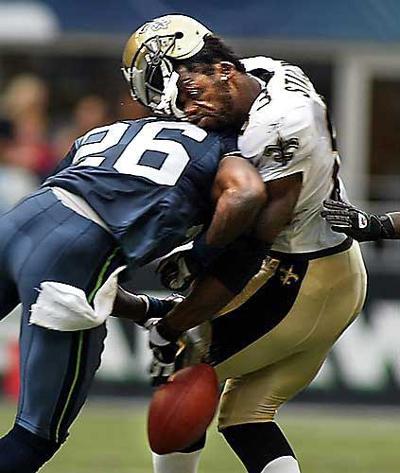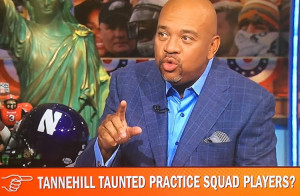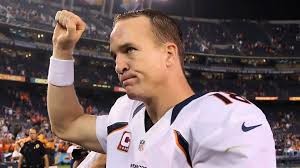You know you’re in trouble when Hollywood starts talking about you.
Just look at Steve Jobs. His death gave birth to six biopics in two years (it will be interesting if history renders a verdict of Jobs as a Henry Ford or P.T. Barnum).
Similarly, NFL Commission Roger Goodell, Tinseltown has you in their sites.
Hollywood has done myriad documentaries on the risk of helmet-to-helmet injury. But the true salvo came in November, when Sony greenlit the feature film Concussion, with Will Smith. Though the movie was a steaming bowl of turd, the story — about the coroner who discovered the concussion syndrome CTE in 2003 and tried to warn the NFL about risks — was a game-changer.
Artistically, the best thing about that film is that it ended. Eventually.
But that one of Hollywood’s biggest studio threw down with the biggest industry in professional sports is the larger distinction. Once, Hollywood viewed football as the sport of American heroism: Winning one for the Gipper; Marshall University’s resolve to play on despite a plane crash that killed most players; the grit of Rudy.
Now, the NFL is the mustache-twisting villain on the train tracks.
This won’t diminish today’s Super Bowl, of course, enjoying its 50th birthday with much pomp, circumstance, and pre-pubescent child singers. Football has never been more popular, now reserving two more days of the week, Monday and Thursday. NFL teams are holding games in London and Mexico for an international audience. If held to popular election, Super Bowl Sunday would win hands-down over Election Day as a federal holiday.
And ESPN is going apoplectic at the thought of the decline of its blue chip stock. Commentator Michael Wilbon, a grumpy former colleague at The Washington Post, has made a catch-phrase of this refrain: “The NFL will never die because people love to see other people hurt.”
He’s got a point. The Greeks and Romans practiced a more savage game in gladiator matches, and that was the world’s most popular sport from 100 BC to 325 A.D. The Greek philosopher Marcus Aurelius, himself a former gladiator, once urged that the kill-or-be-killed exercise was a necessary step in the ascension to manhood.
“It is not death that a man should fear,” Aurelius wrote. “But he should fear never beginning to live.”
And the NFL has similarly vocal support. This is the 50th anniversary of the championship, and never has the media sniffed the throne of a game more. There were two prime-time shows this week about the sport’s best Super Bowl commercials. With former athletes as commenters (Your seat in hell is reserved, Boomer Esiason). 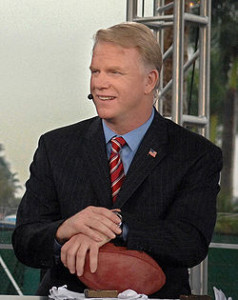
But as philosophers also say, pride goeth. And while the sport currently enjoys a pinnacle perch, the sport is following an eerie trajectory of not only the ancient Greeks, but a contemporary sport, boxing:
Overreach. Like football, boxing was the most popular sport in the nation, dominating headlines and coverage for 80 years with heroes the United States once reserved for war heroes. Joe Louis, Rocky Marciano and Muhammad Ali were more recognized than Coca Cola. 

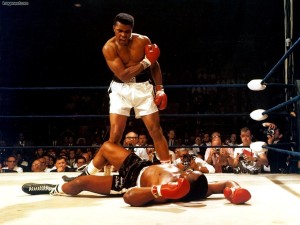
Football has a similar trifecta in Tom Brady Peyton Manning and Cam Newton, also all big endorsers of the endorsement. Commercially-concocted heroism never ends well.
- Gambling. Boxing was quartered and fed to junkyard dogs by organized crime, which paid off boxers to take a dive. The sport became so fractured with competing illegal interests that, since 2004, we have not had a unified heavyweight boxing champion, once as preposterous a notion as flying cars. Similarly, the NFL is under federal investigation for its ties with fantasy football leagues, which are as crooked as my handwriting.

- Denial. Boxing finally recognized the danger of concussions, and grudgingly conceded in 1955 a syndrome known as Dementia Puglistica, virtually identical to CTE. But the sport — with the NFL shouting an “amen” from the pulpit — claimed the brain injuries required a genetic precondition and posed a risk to only two types of athelets — boxers and steeplechase racers. To this day, the NFL insists that linking 70,00o blows to the head — which an average NFL lineman receives — to brain damage remains a questionable science (apply parallels to the tobacco industry here).
Windbag analysts love to counter that the sport isn’t in similar jeopardy because it appeals to a better-protected, more-aware demographic: teens (you know you’re listening to douche bags when they talk about reaching the right demographic, a fancy word for ATM).
But to those who prostitute in sales and hype, consider. There is but one demographic: child-bearing mothers. They are the first to recognize brutality, and the first step up to keep their children from engaging in it.
Today, boxing is a niche sport, filled with poor, uneducated athletes who fight for money or anger. Name one parent you’ve ever heard proudly boast “my boy is trying to be a pro boxer.” Now name a parent who doesn’t beam that the kid got a scholarship to a punishing college football powerhouse.
That tide may be shifting. With the high profile concussion-deaths of Mike Webster, Junior Seau and Ken Stabler, with the terrifying mountain of evidence that even a sport like high school girl’s soccer is a concussion risk, how many parents will want their offspring entering this workplace:
Are you ready for some badminton?

